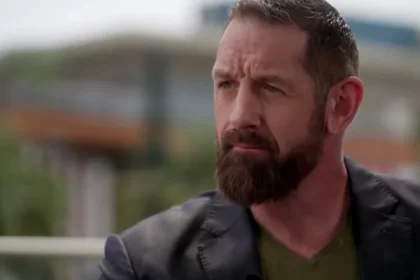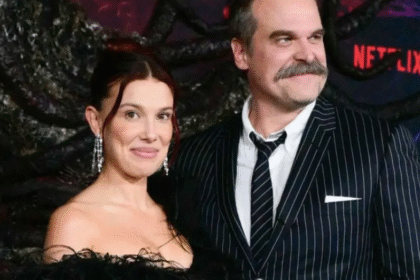What We Know: Triple H’s Announcement
WWE Chief Content Officer Paul “Triple H” Levesque recently revealed that the company is building a brand-new Performance Center in Orlando, Florida, stating that it will be “even bigger and better” than the current developmental facility.
- What We Know: Triple H’s Announcement
- What the Current Performance Center Is: Background & Legacy
- What’s Changed: Why Build a New One?
- What We Don’t Yet Know: Questions Pending
- Stats & Capacity: Numbers That Matter
- Wider Context: WWE’s Development Pipeline Through the Years
- My Take: Why This Is a Big Deal
- Potential Features & Upgrades We Might See
- What This Means for WWE & Its Future Stars
- What To Watch: Timelines, Announcements, & Early Indicators
He made the comments during an episode of Nightcap with Unc & Ocho, when asked about WWE’s developmental operations, including its NIL (Name, Image, Likeness) program and how WWE is recruiting collegiate athletes. He confirmed the new facility will also be in Orlando.
The existing WWE Performance Center, located at 5055 Forsyth Commerce Road, Orlando, has been operating since July 2013 and has trained many of today’s top names in WWE, including Becky Lynch, Seth Rollins, and others. SEScoops+2Wikipedia+2
What the Current Performance Center Is: Background & Legacy
To appreciate how significant this new build is, here’s a brief history of the facility they’re essentially outgrowing:
-
The original Performance Center opened on July 11, 2013.
-
It’s about 26,000 square feet, featuring seven training rings, a world-class strength & conditioning area, medical/rehab facilities, production/edit suites, etc.
-
It served not only as the developmental home for NXT and for up-and-coming talent, but also handled many behind-the-scenes operations: character training, promo work, medical evaluation, etc.
-
Notable stars who passed through its doors include Seth Rollins, Becky Lynch, and others who went on to Raw/SmackDown.
The Performance Center has been a cornerstone in WWE’s talent pipeline; its role grew significantly during the pandemic years (e.g., hosting tapings without live audiences), which emphasized how crucial a controlled training/production facility is.
What’s Changed: Why Build a New One?
WWE isn’t doing this as a cosmetic upgrade. Several forces make the timing important:
-
Expanding roster & recruitment
WWE is bringing in more athletes from outside traditional pro-wrestling from colleges, Olympic backgrounds, etc. The NIL program is one example where college athletes are being scouted and brought into the pipeline. The more recruits, the more need for space, resources, and specialized facilities. -
Higher production expectations
With NXT now on major networks (e.g., The CW), more eyes are on developmental shows. Fans expect higher quality, not just in wrestling, but in presentation, promos, camera work, and character work. A newer facility can help support that. -
Facility wear & capacity
The current center has served its purpose well for 12 years, but wear, limited space, and evolving needs (medical, rehab, performance, technology) likely demand a next-gen facility. Levesque’s wording (“bigger and better”) suggests more than just a cosmetic or incremental upgrade. -
Strategic position in WWE’s developmental system
WWE has renewed focus on its developmental brands not just NXT, but also Evolve, WWE ID, etc. To maintain that “farm to main roster” path, better infrastructure helps. Fans and talent both benefit.
What We Don’t Yet Know: Questions Pending
While it’s exciting news, many details are still vague:
-
How large will the new facility be, compared to the current one? Exactly how many square feet bigger?
-
What features will be added (new rings, enhanced medical/rehab areas, upgraded production or broadcast capabilities)?
-
What is the timeline for planning, construction, and opening?
-
Will the existing Performance Center be entirely replaced, or will both operate in tandem during some period?
-
What will this mean for WWE’s developmental logistics (i.e., where talent live, travel, usage of current PC during building)?
Stats & Capacity: Numbers That Matter
Here are some relevant figures and comparisons to give context:
| Metric | Current PC (Orlando) | What’s Known / What’s Expected |
|---|---|---|
| Square footage | ~ 26,000 sq ft | The new one will be bigger, but the exact size is not yet revealed. |
| Number of training rings | 7 | Possibly similar or more likely upgraded equipment. |
| Years in operation | Opened in 2013 → about 12 years as of 2025. | New facility likely to be modern, future-proof. |
| Number of talent trained (ever) | Dozens who became main roster stars; current trainees around 65-70 at any time. Wikipedia+1 | It will presumably support more talent simultaneously. |
These numbers help to illustrate both the growth over time and the scale of WWE’s development needs.
Wider Context: WWE’s Development Pipeline Through the Years
To understand why this move is meaningful, a little history helps:
-
Before the Performance Center, WWE’s developmental system included Florida Championship Wrestling (FCW), based in Tampa. FCW was essentially absorbed/replaced by the new Orlando training facility in 2013.
-
The PC has also been critical during unusual periods: during the COVID-19 pandemic, WWE shifted many productions there and adapted its presentation. It allowed WWE to produce shows when live audiences weren’t possible.
-
The facility has also helped WWE expand globally: the London Performance Center opened in 2019 to support UK / European talent streams. WWE has also announced Performance Center plans in Mexico, tying into lucha and local talent integration.
WWE has steadily built up its developmental ecosystem, with branches, programs (NXT, WWE ID, Evolve, etc.), and the PC has been the central hub.
My Take: Why This Is a Big Deal
From a fan’s or insider’s perspective, this has several implications:
-
Higher ceilings for new talent: If the new facility is well-designed, WWE can give athletes more chances (better medical care, character work, production exposure). That helps with preventing burnout, injuries, and ensuring that new stars are more polished when they arrive on main roster shows.
-
Increased competition & quality: Other wrestling promotions (AEW, international wrestlers, indie circuits) are also getting more professional. WWE needs to stay ahead, both in talent and in how talent is trained and presented. A newer Performance Center helps maintain that competitive edge.
-
Potential delays / growing pains: Any project of this scale will have hiccups in construction, budgeting, moving talent, and scheduling. WWE will have to plan carefully so current ongoing shows (like NXT) aren’t disrupted badly.
-
Fan expectations will rise: With bigger facilities, better production, WWE is also implicitly promising better performance. This raises standards and also increases pressure on talent and creatives to deliver.
Potential Features & Upgrades We Might See
Based on what WWE has done historically, and what fans have speculated, here are some features the new Performance Center could include:
-
More rings or specialized rings (e.g., padded ring, high-flyer ring, etc.)
-
Larger or upgraded medical, rehab, and physical therapy facilities
-
Improved broadcast/production studios, green screens, VO booths, editing suites
-
Enhanced strength & conditioning, athletic training equipment
-
Better facilities for character development: promo rooms, acting/coaching spaces, classroom-style spaces for media training, psychology, etc.
-
Possibly more living/housing support for recruits, easier logistics if more talent is being brought in from across the U.S. and internationally
What This Means for WWE & Its Future Stars
The announcement doesn’t just affect the building; it affects what WWE is doing long term.
-
More talent → more depth: With more space and better infrastructure, more people can be trained, possibly reducing bottlenecks. This could mean faster transitions for some stars or more experimentation with styles.
-
Better readiness for main roster: Talent graduating from the developmental system may be more polished, produce stronger promos, have better conditioning, and have fewer injuries or mishaps.
-
Global strategies: As WWE builds PCs in multiple locations (Orlando, London, Mexico, etc.), it’s investing in local talent pipelines. That helps globalize WWE’s brand and possibly foster diverse wrestling styles (lucha, European, etc.).
-
Impact on schedules and shows: With more training capacity and better facilities, you might see higher production values in NXT, more ambitious match types, special segments, or even more frequent showcases of developmental stars.
What To Watch: Timelines, Announcements, & Early Indicators
Here are what I’ll be paying attention to, and what signals will show whether this project delivers:
-
Official blueprint/renderings: When WWE releases design plans, floor space, tech specs, etc., that’ll signal how serious the upgrade is.
-
Talent expansion notices: Will WWE broaden tryouts, take in more athletes, or increase class size?
-
Program expansion: More shows, more content from NXT, Evolve, etc., possibly more broadcasts from the new facility.
-
Operational overlap: Watching if both old and new Performance Centers run together, or whether one is replaced.
-
Engagement with talent feedback: Do current trainees speak up about improvements, changes? If the transition is felt by the wrestlers positively, it usually reflects in performance.











